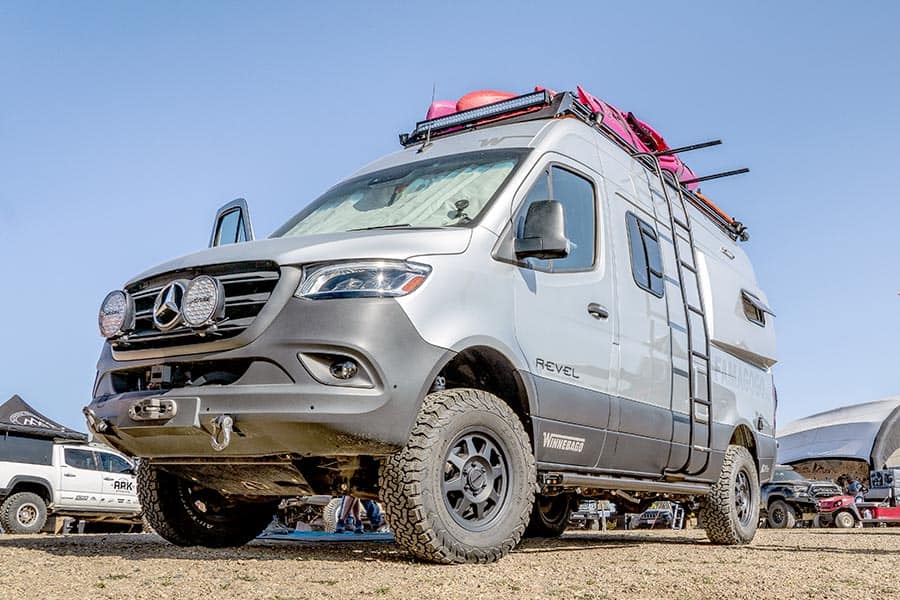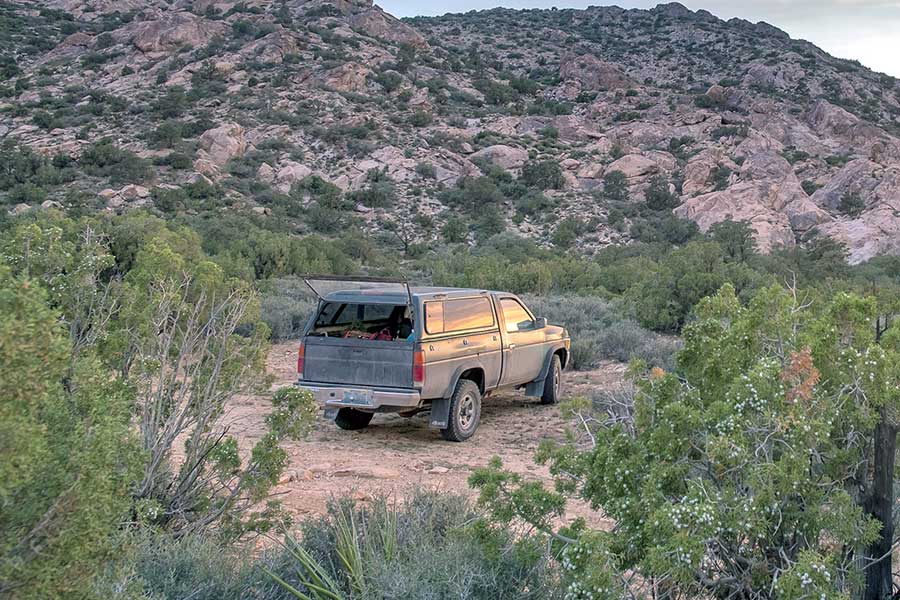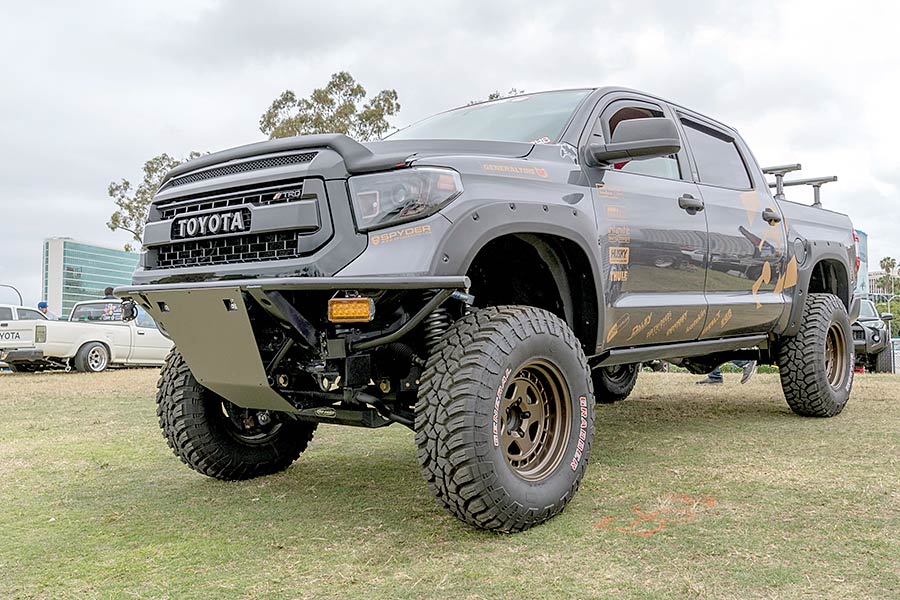
Off-roading is an addictive pastime, and it gets you to some of the most incredible camping locations you will ever experience. Taking your truck, Jeep, or even van out onto the trails or into the deep wilderness is a refreshing break from the monotony of paved roads and traditional campgrounds. But do you need skid plates for off-roading?
While you don’t technically “need” skid plates to go off-roading, they are relatively inexpensive accessories and help protect your vehicle from avoidable damage. Therefore, installing skid plates is highly recommended before you head out off-roading if you want to protect your investment.
So what exactly do skid plates do? Can you go off-roading without them, or is that a recipe for disaster? Are they expensive, and if so, are they worth the money? Read on to learn the answers to these skid plate questions and more.
All You Ever Wanted To Know About Skid Plates
Off-roading is a recreational activity where people take vehicles off the pavement to drive on unimproved surfaces. Some off-roading activities take place on tracks or known trails; others involve bushwhacking, rock-crawling, fording rivers, or other rugged driving practices.
Off-roading could take you anywhere from the sandy deserts of Utah and Nevada to the remote muddy forests of Maine to the bogs and swamps of sunny Florida. For the more adventurous among us, off-roading will get you off of the well-beaten path followed by “normal” campers to some genuinely spectacular camping destinations.
Off-roading exposes your vehicle to all kinds of adverse conditions. For example, mudding or mud-bogging can spray mud and debris all over your vehicle’s undercarriage or get it into your engine compartment. Likewise, driving on dunes or beaches can get sand into the moving parts of your vehicle, a highly suboptimal condition.
And driving through woods, forests, trails, or rocky environments can cause flying debris to hit your undercarriage or bring your vehicle down onto hard surfaces such as rocks, which could cause a puncture in your gas tank or oil pan. Off-roading is a hearty and rugged activity, and your off-roader needs good protection from the dangers associated with it.
That’s where skid plates come in. A skid plate is a strong plate installed on your vehicle’s undercarriage to protect it from damage. Some skid plates bolt over the entire undercarriage; others cover specific high-risk components like the transmission or the transfer case.

But is it really essential to protect your undercarriage? What is the worst that could happen? The undercarriage of your vehicle is where many complicated and critical parts live. The oil pan, gas tank, transmission, and transfer case all live underneath your vehicle and are vulnerable to damage when you’re off-roading.
To maximize their strength, skid plates are made from metal. The most common materials for a skid plate are aluminum and steel. Aluminum and steel offer different and complementary benefits.
Aluminum is lightweight but prone to developing holes, rips, or tears after prolonged use. Steel is heavier, but it’s more durable and generally only experiences dents and dings. It is also less likely to experience a catastrophic failure than aluminum, making steel skid plates easier to repair.
Some vehicles have a covering for their undercarriage called a belly pan. While these parts are similar, belly pans are not skid plates. Instead, belly pans are designed to enhance the aerodynamic performance of a vehicle by smoothing out the contours under the vehicle to reduce drag, but they’re not intended to protect the undercarriage from damage.
A belly pan might offer some protection from dust or small debris, but they’re not built to endure the rigors of serious off-road driving. Rather than durable metal, they are generally made from materials like fiberglass or plastic.
What are Skid Plates?
Skid plates are metal plates bolted onto the undercarriage of a vehicle to protect it from flying debris or impacts with hard objects or surfaces.
For example, a non-plated truck that crashes down on a log or rock may risk puncture damage to the oil pan, or a Jeep might end up with mud or sand in the engine compartment.
Skid plates protect these parts of your vehicle from damage, which makes off-roading more fun for you: nothing will put a halt to a fun day in the woods like a punctured oil pan or a smashed transfer case.
Some skid plates are designed to cover the entire undercarriage, while others are designed to bolt on to specific components of your vehicle to protect them. Rock-crawlers, for example, might invest in a particular skid plate that is designed to protect the transfer case or the transmission if a crawl goes awry.
What is the Point of a Skid Plate?
Skid plates have been designed to protect your vehicle from damage. The undercarriage is not the most romantic or sexy part of a vehicle, but a lot of critical stuff resides under there, and it is essential to protect it from harm.
While they’re intended for off-roading, some people install skid plates on regular vehicles that sit low to avoid damage from high-speed bumps or other road obstacles. After all, one can encounter obstacles and debris even on the pavement; it’s not uncommon for road debris to puncture, scratch, or otherwise damage belly pans.
Other Posts of Interest
- What’s The Difference Between A Sprinter 2500 And 3500?
- What RVs Are Built On A Mercedes-Benz Sprinter Chassis?
- Why Are Camping Lights Red?
- What Vans Can You Stand Up In?

Is a Skid Plate Worth it?
Skid plates are absolutely worth the money. It might cost you $1,500 to buy and install skid plates for your off-road vehicle. That’s not chump change, but it’s a lot cheaper than fixing a busted truck.
For example, a new transfer case might cost you somewhere between $2,000 and $2,500. A new transmission or a transmission repair could cost anywhere from $1,000 to $4,000. If you crack your oil pan, it could lead to serious engine damage, and you could be looking at a new engine — not to mention the cost to get your vehicle towed out of the woods and the massive buzzkill that is a disabled vehicle.
All things considered, if you plan to off-road, you should probably invest in some skid plates to avoid costly repairs down the line. Of course, your vehicle will need specific plates due to differences in the design and layout of vehicles, but a little bit of research will help you price out the plates for your particular vehicle.
What is the Most Important Skid Plate?
It’s hard to decide which skid plate is the most important. Some internet wags have said that the most important skid plate is the one between the rock and where you don’t want to be or the one you don’t already have — but that’s not a helpful answer.
The consensus seems to be that the most important skid plate is the one that covers your oil pan. A cracked or pierced oil pan is going to bring your fun day on the trail to a rapid and unceremonious end. Not only that, but the consequences of losing engine oil can be expensive: a damaged engine is rarely a cheap fix.
Other off-roaders recommend getting the front differential or your control arm skids plated first. Ultimately, you should evaluate your specific vehicle and driving conditions to decide. Does your truck or Jeep have pre-installed skid plates? What type of terrain will you be driving over, and what is your ground clearance?
Talking to other off-roaders who use the same or similar trails as you might help you decide which skid plate is the most essential for you.

How Much Does it Cost to Add Skid Plates?
The cost of skid plates varies depending on your vehicle and the plates themselves. Individual skid plates might only cost a couple of hundred dollars. On average, a fuel tank plate is between $150 and $250; an oil pan plate is $100-$250; transmission plates are around $175-$275. Installing plates on your whole vehicle will probably cost about $1,500.
So whether you’re looking for skid plates for your reliable Toyota or plates for your cherished Rubicon, there are plenty of options and price points available to choose from.
Do Skid Plates Help Improve Your Fuel Economy?
Skid plates will improve your fuel economy, but not by much. Smoothing out the surfaces underneath your vehicle will reduce drag and improve airflow: after all, manufacturers often use belly pans to improve mileage. However, skid plates will also add weight to your vehicle, and off-road vehicles are not usually designed with fuel economy in mind. Based on our research, you can expect an improvement of 1 to 3 miles per gallon with some skid plates, but your mileage may vary.
Skids These Days
Off-roading is tremendous fun. Taking your truck, van, or Jeep off the pavement and into the sticks will help you connect with nature and lead to some exciting weekend camping trips. In addition, it will help you meet new people, make new friends, and experience new things. Pretty much any of the 50 states have great places to go off-roading to allow you to go exploring.
Skid plates are not technically a “requirement” of off-roading, but they are an excellent idea. Skid plates protect some of the most sensitive and essential parts of your vehicle from damage. For a modest cost, you can prevent severe damage to your vehicle and prepare it for the rigors of off-road driving. If you’re taking your super-cool 4×4 off the pavement for any length of time, skid plates are an essential investment.






